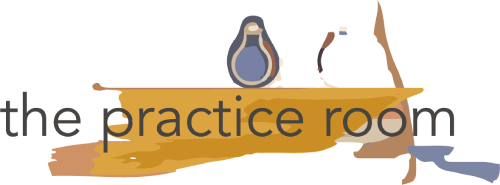The Practice Room classes are suited for the following 3 levels:
The following are not water-tight compartments, but indicative to help you decide the level of class that will suit you the best. Also, the times indicated are based on our experience of having studied in the Iyengar tradition ourselves, having taught many students over the year. These times may differ in other traditions/ situations.
The advancement across the ‘Levels’ is not just based on one’s physical abilities, but is more importantly based on the maturity in practice. Some of the things to consider are: ability to hold Asana positions with comfort and grace for extended periods of time without exhaustion or distraction, regularity and consistency in practice over the years, ability to modulate and sequence ones practice in different life situations, quality of ‘meditatively’ in ones practice, more than some ‘Pranayama Techniques’, an appreciation of the use and application of ‘Breath’ in one’s practice. Specifically in the Iyengar tradition, it also includes an appreciation of the intelligent and discriminating use of props or supports.
Choosing above ones level, in the remote format with no guidance, is likely to result in a superficial understanding of the Asana actions. Some of the instructions and prop uses might not make sense. The session might leave you feeling confused, distracted, bored. If this is the case, we recommend going to the previous level.

The Level GENTLE also follows the above scale, and is addressed to:
- Elderly practitioners
- Those with health limitations
- When one is recovering from an illness injury
- Anyone else who will benefit from a slower paced practice with more props
Experienced Beginner Level practitioners are expected to have :
- Familiarity with all the foundational Asanas in standing, seated, forward extensions, backward extensions, twists, restorative positions.
- Introduction to the basic inversions: handstand, shoulder stand and headstand
- Familiarity with the use of the most commonly used props – wall ropes, blocks, belts, blankets
- Familiarity (complete proficiency is not required)with the Sanskrit names of the Asanas
- Some idea of how to modulate ones practice for the days of menstruation ( for women)
- Some idea of how to modulate ones practice for any health conditions or limitations ( back, knee etc.)
Intermediate Level practitioners are expected to develop
- Familiarity with all the foundational Asanas in standing, seated, forward extensions, backward extensions, twists, restorative positions, Inversions (handstand, elbow balance, shoulder stand, headstand
- Ability to appreciate the individual ‘actions/ component parts’ of an Asana ( in other words, the intermediate positions that come together to make the final Asana)
- Familiarity with the use of props – wall ropes, blocks, belts, blankets, chairs and bolsters
- Increased familiarity with the Sanskrit names of the Asanas
- Familiarity with the menstrual practice ( for women) – the basic menstrual sequence, actions that are to be avoided, adaptations that can be made, actions that should be done ‘mildly’
- Familiarity with adjusting ones practice for any health conditions or limitations ( back, knee etc.) – actions that are to be avoided, adaptations that can be made, actions that should be done ‘mildly’
- Confidence to take on the more challenging Asanas
- Familiarity and comfort with supine Pranayama


